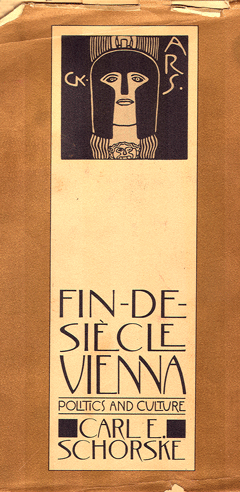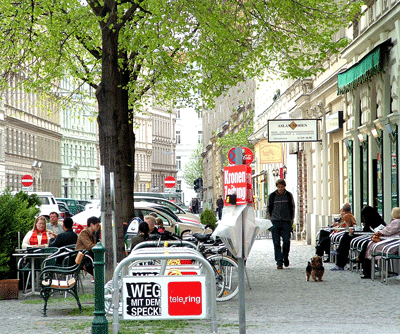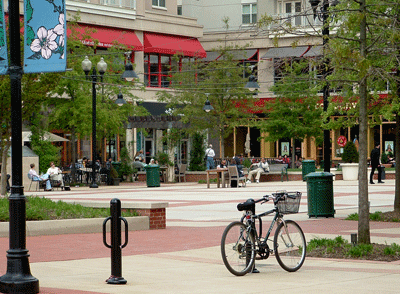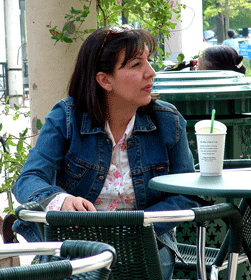
Tales of a 21st Century Gypsy
April 18, 2005 Urban Form in Vienna.
Rebecca and I signed up for a ten-hour membership at an internet café across the street from our hotel. We had to laugh at ourselves. Other people arrive in Vienna on holiday and rush out to drink coffee and eat pastries, or to see the Lippizaner stallions. Not us, we rush out to check our emails and get on the web.
The café had a free book shelf. I love free bookshelves, not because I need books, but because I am intrigued by what lands up there. Most of the books on this one were in German, of course, but a few were in English. One was a science fiction novel that Rebecca turned out to want. Another was a book that I picked up, Carl Schorske’s, Fin de Siècle Vienna: Politics and Culture. I left something else in its place; I try to get rid of a book whenever I acquire a new one.
Schorske’s book is a collection of five essays. The one that interested me was on urban form. Entitled “The Ringstrasse, Its Critics, and the Birth of Urban Modernism,” it considered how the form of the city changed in the 19th century as a reflection of economic and technological change at the time. In the 1860s Vienna’s leaders recognized that they no longer needed a 300-meter band of open space surrounding the city to protect against invasion. The political situation had changed, so physical protection wasn’t needed. And military technology had changed; a physical barrier wouldn’t help even if protection were needed. So bit by bit, the city’s leaders reclaimed the land from the army to use for urban growth. Thus the question at hand was how to grow the city.
The debate on which the article focuses is between two leading city planners of the time. Camillo Sitte was from a background in the arts. The other, Otto Wagner, was an architect and engineer who did major road projects before winning a competition to do a plan for the newly-opened region. Sitte wanted to create spaces in what was even then becoming an old fashioned style, focused on creating areas that were pleasant to walk and linger in, small spaces on a human scale where the space itself was a destination and a place to be. He focused on the patterns of medieval urbanism, which he sought to recreate deliberately in a planned environment. In contrast Wagner wanted to orient the space towards efficient movement, with the focus on the Ringstrasse as a transportation axis rather than a space that invited people to linger. Wagner’s approach is what Schorske refers to as urban modernism. The article then focused on the architectural form that followed from these conflicting approaches to urban space – somewhat to my disappointment, as I found the discussion of space itself more interesting.




